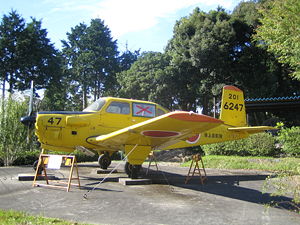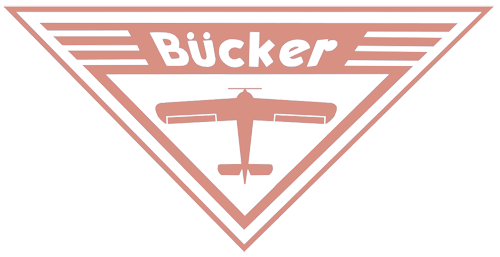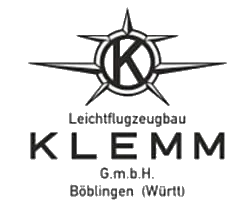Fuji Heavy Industries Fuji KM-2 Trainer
 |
|
| General information | |
|---|---|
| Type | Primary trainer |
| Manufacturer | Fuji |
| Primary users | Japan Air Self-Defense ForceJapan Maritime Self-Defense Force Japan Ground Self-Defense Force |
| Number built | 64 |
| History | |
| Manufactured | 1962-1992 |
| Introduction date | 1962 |
| First flight | 16 January 1962 |
| Retired | Retired from military service in 1998 |
| Developed from | Beechcraft T-34 Mentor |
| Developed into | Fuji T-3 |
|
|
.
History Fuji Heavy Industries
Fuji KM-2 Trainer
Manufactured 1962-1992 Introduction date 1962

The KM was a four-seat civil version of the LM-1, fitted with the more powerful Lycoming engine that was later used by the LM-2. After the KM was used by the Japanese government for civil pilot training, the KM-2 was developed as a side-by-side two-seat trainer, first flying on 16 January 1962. Sixty-two were purchased by the Japan Maritime Self-Defense Force as primary trainers, with a further two purchased by the Japan Ground Self-Defense Force as the TL-1
The Fuji KM-2 is a Japanese propeller-driven light aircraft, which was developed by Fuji Heavy Industries from the Beechcraft T-34 Mentor which Fuji built under licence. Various versions have been used as primary trainers by the Japan Self-Defense Forces.

Design and development
Fuji Heavy Industries was established in July 1952 as a successor to Nakajima, and undertook licensed production of the Beech T-34 trainer aircraft as its first product. This was used by Fuji for the development of the Fuji LM-1 Nikko which was a four-seat liaison aircraft powered by a 225 hp Continental O-470 engine, with introduction of a more powerful 340 hp Lycoming O-480 engine resulting in redesignation as the LM-2, with both the LM-1 and LM-2 being used by the Japan Ground Self-Defense Force.[1
Operators
0
KmCeiling
0
KmCombat RANGE
0
Km/hAircraft Speed
0
Max Crew
Photo Gallery
Fuji Heavy Industries
Fuji KM-2 Trainer
Manufactured 1962-1992 Introduction date 1962


Manufactured 1962-1992 Introduction date 1962
Fuji Heavy Industries, Ltd.
Fuji Heavy Industries
Fuji KM-2 Trainer
Manufactured 1962-1992 Introduction date 1962
General Info
-
-
- Crew: 2
- Length: 7.94 m (26 ft 1 in)
- Wingspan: 10.0 m (32 ft 10 in)
- Height: 2.92 m (9 ft 7 in)
- Wing area: 16.49 m2 (177.5 sq ft)
- Empty weight: 1,134 kg (2,500 lb)
- Max takeoff weight: 1,750 kg (3,858 lb)
-
Powerplant
-
-
- Fuel capacity: 189 L (50 US gal; 42 imp gal) normal, provision for further 76 L (20 US gal; 17 imp gal) in auxiliary tanks
- Powerplant: 1 × Lycoming IGSO-480-A1A6 air-cooled flat-six engine, 250 kW (340 hp)
-
Performance
- Maximum speed: 378 km/h (235 mph, 204 kn) at 4,880 m (16,000 ft)
- Cruise speed: 304 km/h (189 mph, 164 kn) at 3,050 m (10,000 ft)
- Stall speed: 100 km/h flaps down)
- Range: 975 km (606 mi, 526 nmi)
- Service ceiling: 8,170 m
.
Links to Youtube & Others
The JASDF and its contractors considered developing a Japanese-designed, Japanese-produced replacement for the aging Mitsubishi F-1 fighter as early as 1981. A formal feasibility study commenced in 1985.
Fuji Heavy Industries
Fuji KM-2 Trainer
It combined the structure and engine of the KM-2 with the tandem cockpit of the T-34 Mentor
Youtube Link
first flying on 17 January 1978.[2] Fifty were purchased by the JASDF as the Fuji T-3, production continuing until 1992.[













